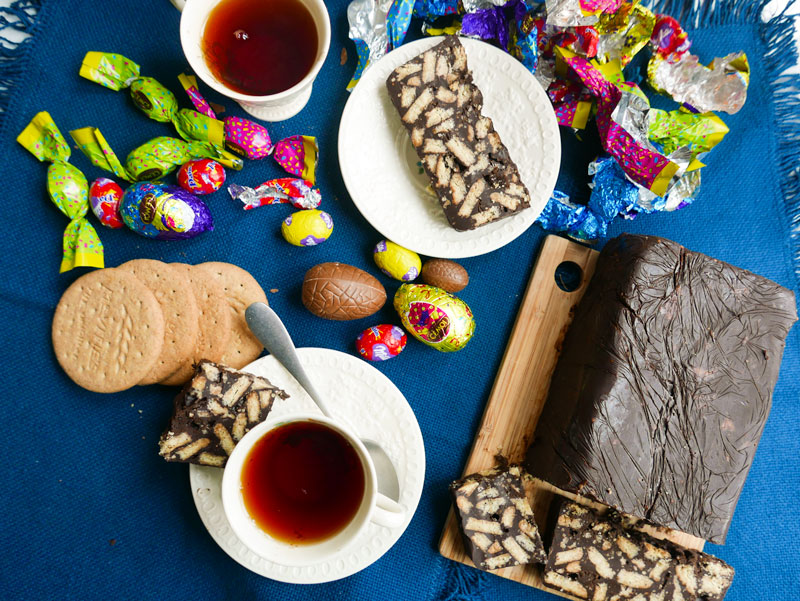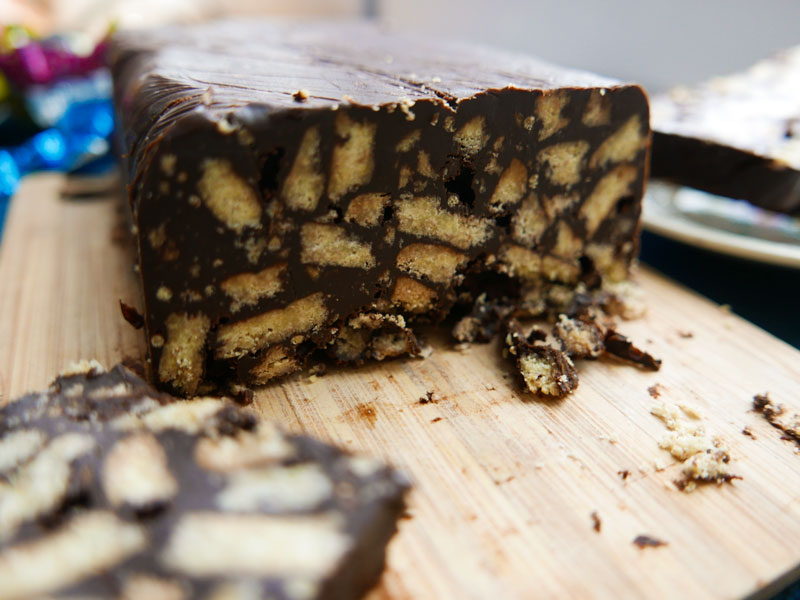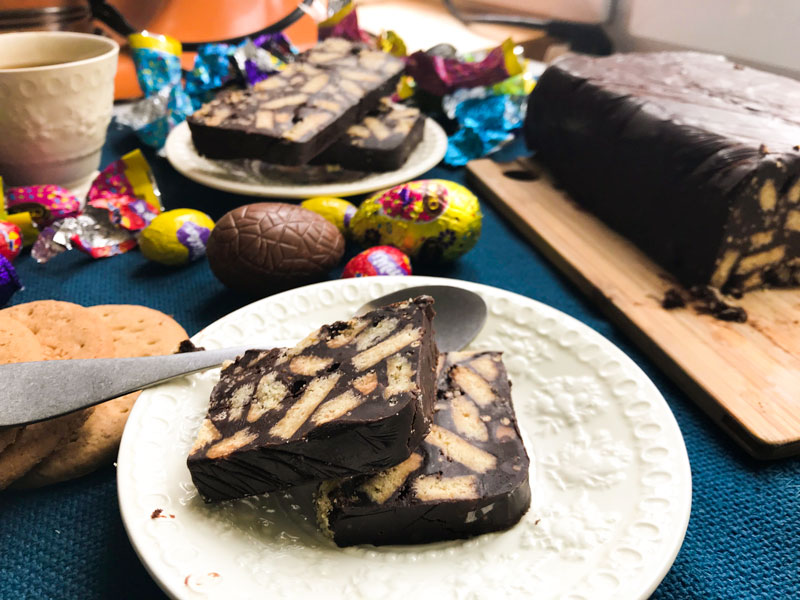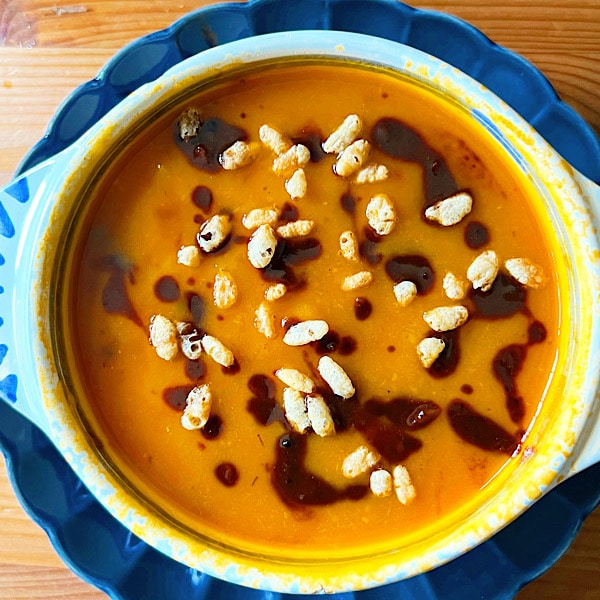
When my friend Elodie asked for a recipe that would use up leftover Easter candy, I knew just what I wanted to make: Chocolate Biscuit Cake.
Chocolate biscuit cake got a lot of press a few years ago when Prince William chose it for his groom’s cake at his wedding to Kate Middleton. Chocolate Biscuit Cake also happens to be Queen Elizabeth’s favorite cake—high praise indeed for a no-bake confection with a just a handful of ingredients.
One taste of Chocolate Biscuit Cake, though, and you’ll understand why the Queen and Prince love it so. Dense, sweet, and crunchy, it tastes like a candy bar made with layer cake frosting. It is neither grand nor gorgeous (except to those who love it), though it can be fancied up with dried fruit, nuts, etc.
Much has been made of Chocolate Biscuit Cake recipes online and in the press. I have read (and tried) many of the recipes. I started out sticking faithfully to the version given by the Queen’s former personal chef but quickly began questioning both the technique and the ingredients. Why cream the butter with (an inordinate amount of) sugar to start? Couldn’t the raw egg be replaced with something a little more, um, safer and shelf-stable? How could one get around the possible gaps that form between the biscuits (especially on top)? And MUST one use so many pans and bowls?
I then consulted Felicity Cloake’s treatise on the treat in The Guardian. She was (as always) incredibly informative and her testing of all kinds of versions of Chocolate Biscuit Cake explained a lot—but she still added sugar and used far too many utensils for me.
So, I set about simplifying the cake. The result is this one bowl method that skips sugar and egg (and substitutes milk), works with any kind of chocolate—leftover Easter eggs included—and is easy enough for kids in the kitchen.
And hey, with another royal wedding coming up in a few weeks (Harry and Meghan, May 19), I have an excuse to make it again very soon.

Chocolate Biscuit Cake
Using half dark chocolate means you can add any—I mean any—type of milk chocolate—including anything left over from past holidays. Digestive biscuits are traditional, though any other crisp, dry, not too buttery and not too sweet cookie will work, as will Graham crackers.
8 oz. (225 g.) bittersweet chocolate, broken into small pieces
8 oz. (225 g.) milk chocolate, broken into small pieces
5 oz. (150 g.) butter, cut into small pieces
3 Tbs. (45 ml) milk
½ of a 7-oz. package of digestive biscuits, such as McVitie’s (3.5 oz./100g.)
LINE a 1-quart loaf pan with plastic wrap, allowing plenty of excess to overhang on each side so that it can be wrapped overtop the cake.
PLACE the chocolates, butter, and milk in a large bowl. Melt them all together over a pan of barely simmering water (double-boiler method), or in a microwave set to half power, stirring occasionally.
STIR the melted chocolate mixture until smooth.
Ladle ½ cup (100 ml.) of the chocolate mixture into the prepared loaf pan, and spread it over the bottom with a spatula or the back of a spoon. (This will make the top of the cake smooth when it is unmolded.)
Break the digestive biscuits into small, 1-inch (3 cm.) pieces directly into the chocolate mixture, and stir until all the pieces are coated with chocolate.
SPREAD the chocolate mixture in the prepared loaf pan. Fold the plastic wrap over top to close, then press on the sealed-in chocolate mixture with your hands to fill in any gaps between the biscuits with chocolate.
REFRIGERATE 3 hours or up to 3 days.
TO SERVE: Unmold the biscuit cake and remove the plastic wrap. Let it stand at room temperature 10 minutes before slicing and serving.



Thank you!
I was just wondering how I could make this cake without the egg (nothing against eggs, but I don’t like the thought of a raw egg in a cake) and I found your recipe.
I’m off to make it now.
Thanks again. :-)
Hi Sherrie, I hope the recipe turned out as you’d hoped…I totally agree with you re: raw eggs in a cake. I just had someone ask me for the recipe in French so I’m planning on making this again soon to retest (and enjoy!). Thanks for taking the time to write up a comment!